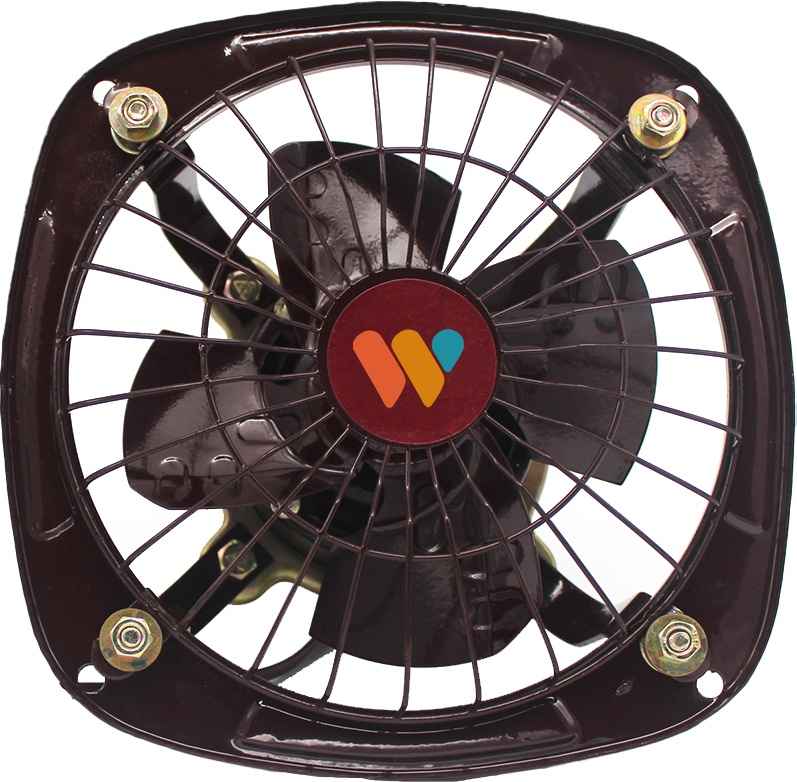Exhaust fans play a crucial role in maintaining healthy and comfortable indoor air quality in both residential and commercial spaces. Engineers design these fans to remove unwanted elements such as humidity, odors, smoke, grease, and airborne contaminants from enclosed areas. By doing so, they help prevent mold growth, reduce the accumulation of harmful gases, regulate temperature, and ensure ventilation. Depending on their application, design, and operational mechanism, type of exhaust fan come in a variety.
Understanding the different types of exhaust fans can be extremely helpful when selecting one for your specific needs. This article delves deep into the various types of exhaust fans available in the market, categorized by their structural design, mounting style, operational mechanism, and intended use.
1. Design-Based Classification of Exhaust Fans
The fundamental structure and mechanism of an exhaust fan determine its airflow capacity, efficiency, and suitability for different settings. Primarily, exhaust fans can be classified into two major design types: axial fans and centrifugal fans.
Axial Exhaust Fans
Manufacturers name axial fans after the direction of the airflow, which runs parallel to the axis of rotation. In these fans, the blades force air to move in a straight line—either in or out of a space. Households and small commercial setups most commonly use these exhaust fans.
Structure and Functionality:
- The central hub holds the blades and spins them on an axis.
- They are capable of moving large volumes of air at low pressure.
- These fans best suit environments that require ventilation over a short distance.
Common Uses:
- Bathroom ventilation
- Kitchen exhaust
- Garage air circulation
- Cooling electronic enclosures
Centrifugal Exhaust Fans
Also referred to as blower fans, centrifugal fans use a different airflow pattern. Air enters the fan through the center of the fan wheel and is expelled at a 90-degree angle through the housing.
Structure and Functionality:
- They use impellers to increase the pressure of the air.
- Ideal for applications involving duct systems.
- Can handle higher static pressures than axial fans.
Common Uses:
- Industrial environments
- HVAC systems
- Laboratory exhausts
- Commercial kitchens
2. Mounting-Based Classification of Exhaust Fans
How an exhaust fan is installed impacts its performance and efficiency. Based on mounting or installation type, exhaust fans can be categorized into several groups:
Wall-Mounted Exhaust Fans
These fans are installed directly into an external wall. They draw air from the interior and vent it straight outdoors, making them highly efficient for localized ventilation.
Features:
- Simple and direct airflow path
- Easy installation with minimal ducting
- Typically used where wall access is readily available
Applications:
- Bathrooms
- Kitchens
- Laundry areas
- Small offices
Ceiling-Mounted Exhaust Fans
Installed in the ceiling, these fans pull air upwards into the attic or directly outside through ducting. They are ideal for areas where wall installation is not possible.
Features:
- Often includes ductwork to carry air outside
- Can be connected to roof vents
- Suitable for humid or steam-prone spaces
Applications:
- Residential bathrooms
- Kitchens
- Meeting rooms
- Shower areas
Window-Mounted Exhaust Fans
Window-mounted fans are ideal for apartments and buildings where wall or ceiling installation is restricted. These fans are fixed in place of a glass pane or within a window frame.
Features:
- Pull air directly outside without the need for ducting
- Reversible models allow air intake and exhaust
- Easy to install and remove
Applications:
- Compact kitchens
- Bedrooms in urban flats
- Small studios
Inline Exhaust Fans
Inline exhaust fans are mounted within ductwork rather than on a wall or ceiling surface. They are hidden from sight and typically serve multiple exhaust points.
Features:
- Highly effective for long duct runs
- Reduced noise since the fan is located away from living spaces
- Can be used in conjunction with multiple grilles or vents
Applications:
- Multi-room ventilation systems
- Large bathrooms with multiple vents
- Commercial buildings
3. Operation-Based Classification of Exhaust Fans
Modern exhaust fans differ in their operational mechanisms. Some offer manual controls, while others are equipped with smart features that respond to environmental changes.
Manual Exhaust Fans
Manual exhaust fans are the most traditional and budget-friendly models. They are operated via wall switches or pull cords, giving users direct control over the fan’s operation.
Characteristics:
- Basic models with on/off functionality
- Require user intervention for operation
- Simple design, easy to repair
Best For:
- Users preferring control over usage time
- Budget installations
- Small homes and shops
Automatic Exhaust Fans
These fans are equipped with sensors or timers that automate their functionality. They offer convenience, energy savings, and better environmental control.
Types of Automation:
- Humidity Sensor Fans: Turn on automatically when humidity reaches a certain level.
- Motion Sensor Fans: Detect presence and activate automatically.
- Timer-Based Fans: Operate for a preset time period after being switched on or off.
Benefits:
- Increased energy efficiency
- Improved air quality management
- User-friendly and low-maintenance
Applications:
- High-traffic restrooms
- Public facilities
- Modern homes with smart systems
4. Area-Specific Classification of Exhaust Fans
Different areas within a building require exhaust fans with specific features tailored to the environment. This classification ensures that each fan type suits its particular room or space.
Bathroom Exhaust Fans
These are specifically designed to remove humidity, odor, and prevent mold or mildew growth. Many models include additional features like built-in heaters and lights.
Key Features:
- Moisture-resistant components
- Quiet operation
- Often paired with lighting fixtures
Considerations:
- Calculate proper CFM based on room size
- Consider models with humidity sensors for efficiency
Kitchen Exhaust Fans
Kitchen fans tackle grease, smoke, heat, and cooking odors. Depending on the design, they can be wall-mounted, range hood fans, or ducted systems.
Key Features:
- High airflow capacity
- Grease filtration
- Heat and fire resistance
Range Hood Fans:
- Directly installed above cooktops
- Integrated with filters and lighting
- Essential for commercial and residential cooking areas
Attic Exhaust Fans
These fans help ventilate attics by removing excess heat and moisture, thereby protecting roof structures and reducing HVAC load.
Key Features:
- Thermostat-controlled or solar-powered
- Installed on gable vents or rooftops
- Operate independently or with other HVAC systems
Benefits:
- Reduces cooling costs in summer
- Extends roof life by preventing moisture buildup
Garage Exhaust Fans
Garages often contain fumes from vehicles, chemicals, or stored paints and tools. These fans are robust and designed to handle heavy-duty ventilation.
Key Features:
- High CFM ratings
- Durable construction materials
- Optional explosion-proof features
Applications:
- Residential garages
- Mechanic workshops
- Storage units
Industrial Exhaust Fans
Industrial fans are engineered for large-scale ventilation in manufacturing units, warehouses, and factories. They manage heavy air volumes and remove harmful substances.
Types:
- Wall-mounted or roof-mounted
- Centrifugal fans for ducted applications
- High static pressure fans for dust-laden air
Considerations:
- Compliance with industrial ventilation standards
- Corrosion-resistant materials
- Explosion-proof models for hazardous environments
5. Specialized Exhaust Fan Types
In certain environments, conventional exhaust fans may not suffice. Specialized fans are developed for such unique applications.
Explosion-Proof Exhaust Fans
These are used in hazardous environments where flammable gases, dust, or vapors may be present. Built with spark-proof materials and sealed motors, they ensure safety and compliance.
Applications:
- Petrochemical facilities
- Mining operations
- Grain silos
Solar-Powered Exhaust Fans
Eco-friendly fans that use solar energy to operate. Mostly used in off-grid applications or as a backup during power outages.
Applications:
- Green homes
- Off-grid cabins
- Energy-efficient construction projects
Heat Recovery and Energy Recovery Ventilators (HRVs and ERVs)
While not pure exhaust fans, HRVs and ERVs integrate exhaust with air intake to balance air quality and energy efficiency.
Functionality:
- Extract stale indoor air
- Recover heat or energy and use it to precondition incoming fresh air
- Enhance indoor comfort and reduce utility bills
Conclusion
Exhaust fans are indispensable tools for maintaining proper ventilation, enhancing air quality, and protecting structural integrity. The diversity of exhaust fan types—from basic axial models to advanced, sensor-equipped inline systems—caters to a wide range of needs, environments, and budgets. Understanding the specific characteristics of each type, including design, installation method, operational style, and usage area, can help you make a well-informed choice that aligns with your ventilation requirements.
Whether you are outfitting a residential bathroom, a commercial kitchen, or an industrial facility, there is an exhaust fan engineered precisely for your purpose. Investing in the right model not only ensures effective ventilation but also enhances comfort, energy efficiency, and overall health in the space it serves.



